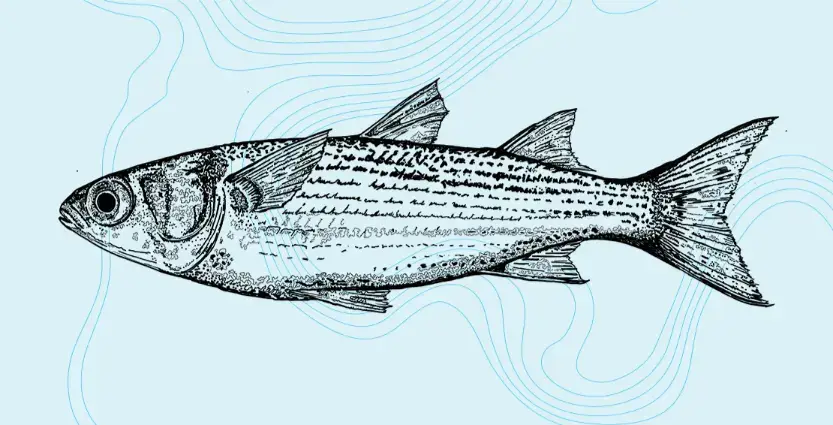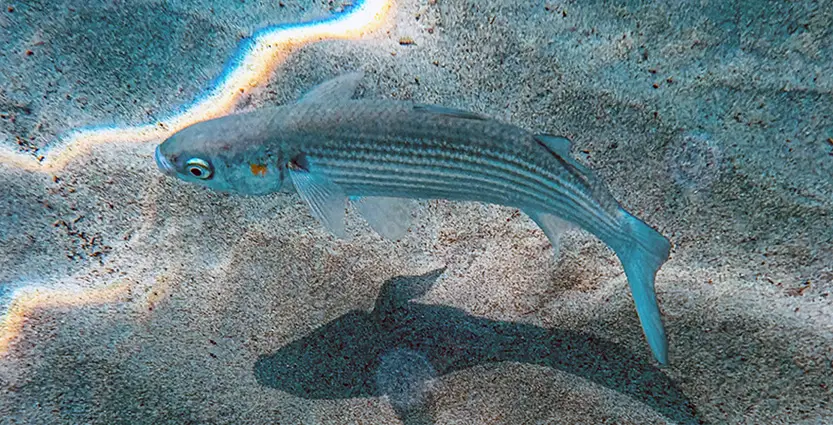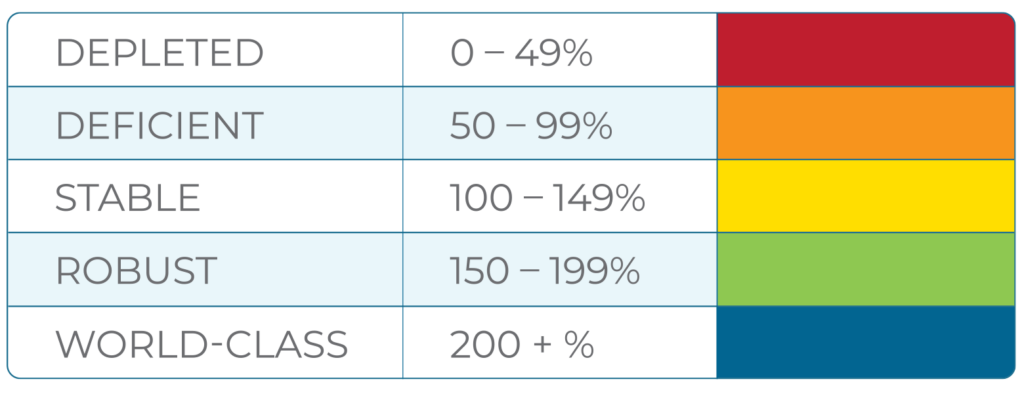Striped Mullet Stock Statusin North Carolina



Status Overview
Striped Mullet are a key forage species in North Carolina’s coastal ecosystems, valued for their ecological role as filter feeders and their cultural and economic importance in both commercial and recreational fisheries. For Striped Mullet, the FINDEX gap assessment compared Target and Terminal values of Fishing Mortality (F35%) and Spawning Stock Biomass (SSB35%) from the most recent stock assessment model developed by the NC Division of Marine Fisheries. The Terminal year in the stock assessment model was 2019.
How It’s Calculated
FINDEX is a novel way to gauge whether the status of a fish population is trending up or down. Management of most fish species in North Carolina is guided by stock assessment models developed by various groups of scientists. The calculations in our FINDEX metric measure the gap between the desired condition of a fish stock (the Target reference value) and the existing condition (the most recent data year in the model called the Terminal value) as determined in each stock assessment. The gaps between Target and Terminal values are reported as ratios.

(0.619 x 0.258) x 100 = 15.98%
FINDEX = 15.98% for 2019

What Does Depleted Mean?
A FINDEX designation of “Depleted” is assigned to any stock with a value less than 50%. Depleted indicates that the stock is severely impaired. Striped Mullet are being removed too rapidly, and the estimated number of spawning females in the population (Spawning Stock Biomass) is well below threshold and target levels for a sustainable fishery. Note there is a significant time lag associated with updates to stock assessments for many of North Carolina’s fisheries. Periods between updates are usually 5 years, and sometimes much longer. For this reason, FINDEX calculations may not accurately describe current conditions – instead, FINDEX evaluates the most recent scientific data available. Striped Mullet data has been updated through 2019.Status Over Time
The stock assessment model for Striped Mullet provides point estimates of Fishing Mortality and Spawning Stock Biomass for each year covered in the data set. We’ve compared the Target reference values to these annual point estimates and calculated the ratios (gaps) for each data year from 1985–2019. Applying the FINDEX gap assessment to the entire time series provides the following stock status trendline:
How Do We Get To World-Class?
Striped Mullet Target values for Fishing Mortality (0.26) and Spawning Stock Biomass (1,019 metric tons) have been established by the management agencies. The existing estimates (2019 values) are 0.42 and 263 metric tons. Under one potential scenario, if Fishing Mortality was to drop to the Target value and Spawning Stock Biomass was to increase to 2,100 metric tons, then the FINDEX value would exceed 200% on our barometer.
Commercial Trends
The graph below illustrates commercial trends for Striped Mullet from 1990 through 2022. In 2022, commercial fishers harvested 2,720,092 pounds of Striped Mullet valued at $2,118, 988. Supporting data was sourced from the North Carolina Department of Environmental Quality.
Recreational Trends
Striped Mullet is not a popular target species for recreational anglers in North Carolina. However, recreational anglers will use cast nets to collect juvenile Striped Mullet (called “Finger Mullet”) as bait to catch other species. Data collection programs rarely encounter coastal anglers fishing for Striped Mullet. As a result, so the data is often scattered and imprecise.
Striped Mullet
Did You Know?
- White Mullet can be differentiated from Striped Mullet by their lack of stripes and the presence of a distinct gold spot on the gill cover.
- Adult Striped Mullet migrate in the fall from NC freshwater and estuarine waters to the Atlantic Ocean to spawn.
- Up to 4 million eggs have been observed in a single female Striped Mullet.
- Striped Mullet are capable of full osmoregulation, meaning they can tolerate salinities ranging from entirely freshwater to full seawater strength.
- The diet of Striped Mullet is primarily bottom muck and surface scum – feeding habits of fishes referred to formally as “herbivorous detritivores”.
- Mullet “jump” to move air into the upper portion of the pharynx to aid respiration.
Harvest Seasons
for Striped Mullet
- The recreational limit for Striped Mullet is currently 200 fish per day (Striped Mullet and White Mullet combined). There is no size limit as harvest is focused on small fish used as bait.
- No annual quota exists for commercial landings of Striped Mullet. Proclamations for Striped Mullet can be found here.
Stay Current
As our team diligently refines FINDEX, we’re committed to delivering the most recent stock status updates for North Carolina’s diverse finfish species. Subscribe below to receive a stream of inshore insights and stay current with our coastal initiatives.
